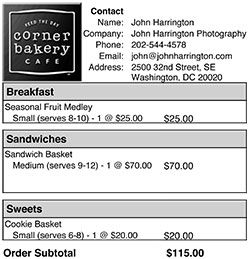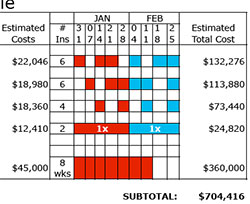It's Not Your Copy Right, it's Mine
![]() My fellow blogger over at the Pro Photo Business blog brought to my attention this, in his entry - The Generational Divide in Copyright Morality, where he, in turn, refers to an article by David Pogue, of the same title, which can be found here.
My fellow blogger over at the Pro Photo Business blog brought to my attention this, in his entry - The Generational Divide in Copyright Morality, where he, in turn, refers to an article by David Pogue, of the same title, which can be found here.
This isn't a new mentality, heck, it's been pervasive for several years, most notably because the RIAA sued places like Napster, and the local soccer mom because they were infringing copyrights. The RIAA's position was "poor poor musicians, they're loosing money...", yet, if you know much about the record deals for the poor (read: up-and-coming) musicians, you know that the standard deal they get is that the record label owns the copyright to the first two albums, and further, that the artist pays a portion of whatever they earn back to the record label when they perform "their own" songs. (a common misconception, as they are not actually their own songs.)
Chase Jarvis, on more than one occasion has noted that the world of copyright is changing, and he's right. To wit:
"I've said it publicly plenty of times: the face of copyright is changing, and as as visual artists, we should be well aware of how it could effect us. Blindly sticking a stake in the ground for copyright is like re-arranging the deck chairs on the Titanic."The Pogue article noted that out of 500 people in attendance at his talk, only two thought that downloading music and movies for free off the internet "might be wrong."
Until the laws change, however, while more and more people are going to be infringing on your work, (note: there are two types of creatives in this world - those that have had their creative works infringed, and those that will) there will be more and more opportunities for you to reap the punitive benefits from these thieves. Yes, that means registering your work, and yes, that means pursing them with an attorney. Don't get me wrong, I'm not happy about this, because I'd rather be making pictures. But the fact remains, that when people steal your creative endeavors, you should be vigilant about going after them.
On the other hand, perhaps if you do produce work, and are paid for it, and wish to distribute it after the fact to others for their own private use, then denoting the work - at the least - with a Creative Commons designator stating what you do - and do not - want done with your work, will be one way in which you can share your endeavors, but ensure that it's not used by corporate America without their paying, yet still being available to the every man.

They write:
Creative Commons defines the spectrum of possibilities between full copyright — all rights reserved — and the public domain — no rights reserved. Our licenses help you keep your copyright while inviting certain uses of your work — a “some rights reserved” copyright.They go on to say:
Too often the debate over creative control tends to the extremes. At one pole is a vision of total control — a world in which every last use of a work is regulated and in which “all rights reserved” (and then some) is the norm. At the other end is a vision of anarchy — a world in which creators enjoy a wide range of freedom but are left vulnerable to exploitation. Balance, compromise, and moderation — once the driving forces of a copyright system that valued innovation and protection equally — have become endangered species.As it stands, the law is, as above "... a world in which every last use of a work is regulated and in which “all rights reserved” (and then some) is the norm...", and I like that that is the default. Yet, I know of people who don't want to do this, and Creative Commons is their way to designate that.
So, pick your level of comfort, and be sure to designate that as such. Just because "the kids" think it's ok to steal your work, doesn't make it so. When the laws of copyright meet up with the patent laws that only protect pharmaceuticals for about 20 years (more here on that), then it will be a new world order for copyright, and people will, in order for creatives to continue to survive, cost so much more on the front end to commission the work, because of the shortened life-span of copyright. That may end up being an unintended consequence of a change in copyright. Who knows.
Please post your comments by clicking the link below. If you've got questions, please pose them in our Photo Business Forum Flickr Group Discussion Threads.


